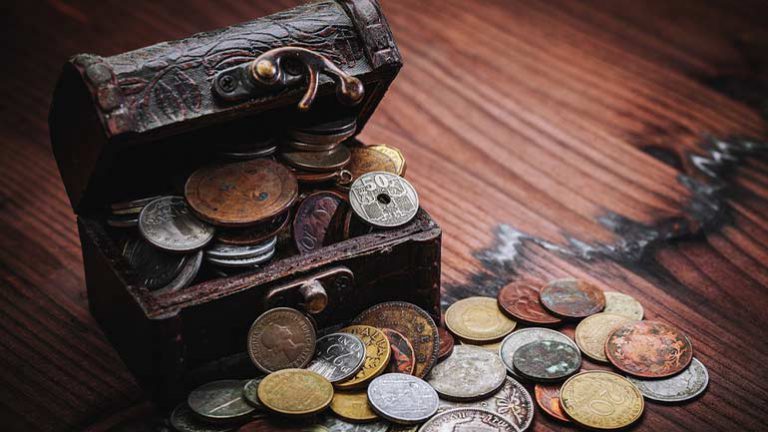The concept of money is almost as old as human civilisation. Money, as we know it now, derives its value from being a trusted medium of exchange, unit of measurement and a store of wealth.
Over the course of human history, money has taken various material forms: from cowrie shells, coins and notes to the current electronic money and digital computer codes, it is evident that money has had an interesting evolution.
Here is a brief overview:
Primitive Barter
It is hard to imagine a world without money, but this was once a reality in 6000 BC. It is believed that the barter system was the mode of exchange during that period. Bartering is the direct exchange of goods or resources for mutual benefit.
Early humans would engage in primitive barter where any goods, such as stones or logs, could be exchanged between humans. This barter system picked up pace around 9000 BC when humans started to grow crops and to rear livestock.
Agricultural Commodities Barter
Commodity exchange continued to become more prevalent and naturally, some goods, such as salt and cattle, were deemed more valuable than others. The barter system had notable advantages, such as the immediate exchange of products, but it was the limitations of the system that arguably gave birth to money.
The original barter system could only be efficient when there was a coincidence of need, and it lacked a common measure of value. Other goods were also indivisible and there was no standard for deferring payments.
Commodity Money
It was not until 3000 BC that commodity money emerged. Ancient Babylonians developed the first guidelines for money with a form of measurement known as ‘shekels’, which represented a specific weight for a variety of goods ranging from grains to metals.
At around 1300 BC, coastal regions around the Indian Ocean began to use cowrie shells in trade. The shells would either be whole or artificially shaped to be worn as ornaments.
After that, at around 1100 BC, the Chinese were credited with using miniature replica tools cast in bronze. There were replicas of many tools ranging from knives and hoes to spades and arrows.
Over time though, the bronze casts conveniently evolved into round shaped coins with holes in the middle to allow them to be hung together.
First Minted Coins
Outside of China, it was in the Kingdom of Lydia (modern Turkey) that modern coinage first appeared at around 600 BC. The coins were made out of lumps of silver, and when Persia conquered Lydia in 546 BC, the coinage techniques would later spread to Persia, Macedonia, and the Roman and Greek empires, where they would be further refined. The coins would later be impressed with pictures of emperors and gods as a sign of their authenticity.
First Paper Money
When it seemed that Lydia would take the lead in currency innovation, the Chinese, in 118 BC, started using leather money, which came in the form of one-square-foot pieces of rare white deerskin with the edges painted with bright colours.
These could rightly be considered as the first documented type of banknotes. China would still take the lead by introducing the first paper banknotes in around 806 AD. It is believed that the copper shortage and the heavyweights of coins in large transactions led to their emergence.
In 1271 AD, European explorer Marco Polo visited China and was impressed by the paper money, which he documented, and he is in fact credited with introducing the idea to Europeans.
It was not until 1661 AD that the first European banknotes would be printed in Sweden. Paper money would later spread throughout the world as European countries went ahead with their colonisation forays.
Switch from Representative Money to Fiat Money
Then came the Gold standard in around 1800 AD, which allowed central banks to create money and have it backed by precious metals. In 1844, the Bank of England notes were fully backed by gold, with the USA following suit in 1879.
The gold standard would later be phased out of major economies following the 1933 Great Depression. This would signal the switch from representative money (money backed by physical commodity) to fiat money (money backed by a country’s government).
Introduction of Electronic Money Transfers and the Invention of Credit Cards
The first bank card was introduced in 1946 by a Brooklyn banker, John Biggins, and it allowed users to make purchases from various merchants. The Diners Club card would later be introduced in 1950, paving the way for the launch of the first credit card in 1958 that was issued by the Bank of America.
American Express also released its first credit card around the same time, and it was the first to be accepted worldwide. A major highlight for credit cards came in 1970 when the magnetic strip was enhanced, allowing for personal and financial information to be securely decoded by machine.
The magnetic strip ushered cards into the information age. But it was the 1990 introduction of the chip technology that allowed for massive adoption of cards globally.
The 1994 arrival of the World Wide Web brought forth the need of having an online e-commerce ecosystem. In 1998, PayPal was founded, and it leveraged the internet to make payments and money transfers online.
Cryptocurrencies
Then in 2008, in the wake of a global financial crisis, the Bitcoin whitepaper was released under the title: ‘Bitcoin: A Peer-to-Peer Electronic Cash System’. It paved the way for the launch of the first cryptocurrency, Bitcoin. Cryptocurrencies are digital currencies that are completely decentralised and leverage the power of blockchain technology.
With cryptocurrencies still at their nascent stages, it is hard to decipher whether they are really the future of money. But what’s for certain is that money will continue to be a key component in how humans perform transactions and business interactions.













